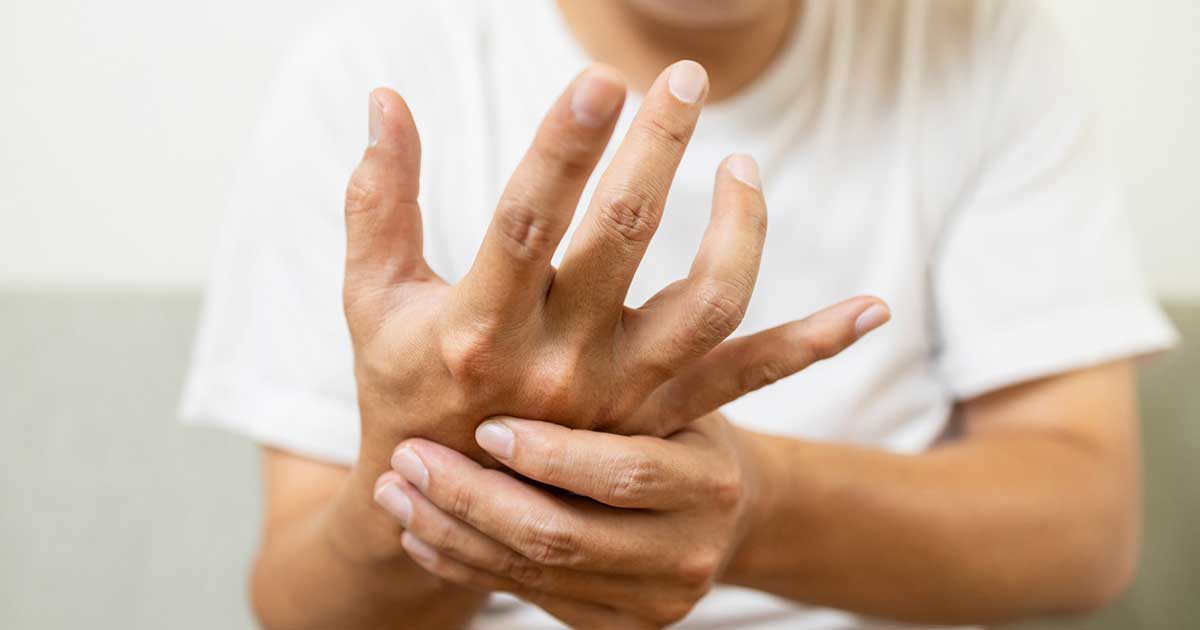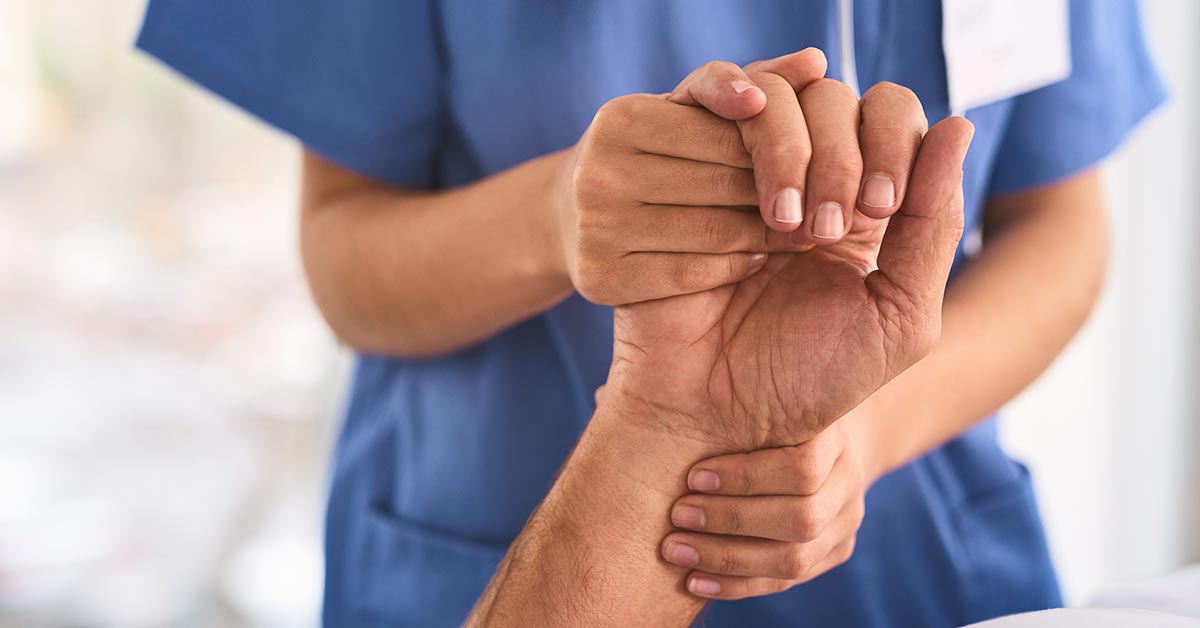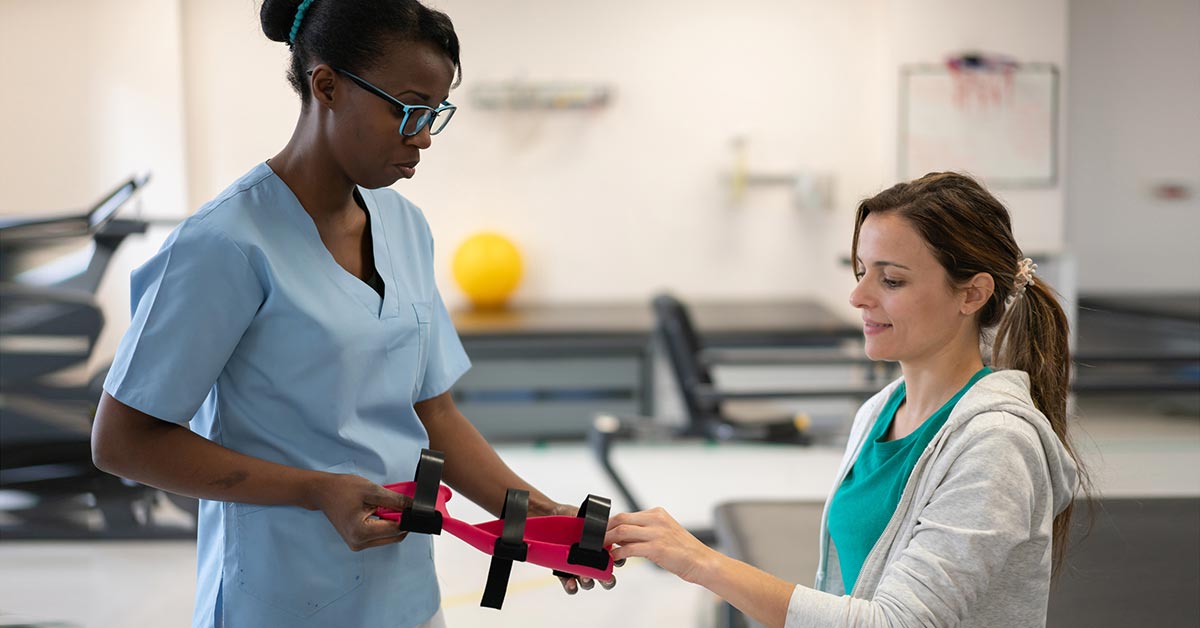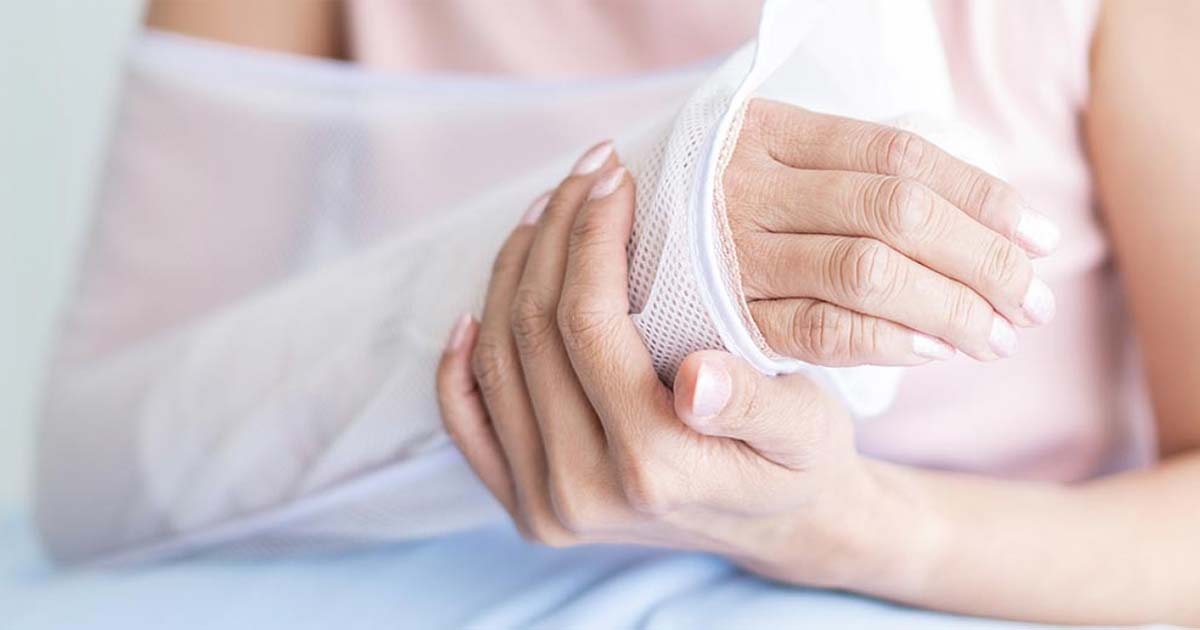So You Jammed Your Finger: Now What?
Advice to improve your movement, fitness, and overall health from the world's #1 in orthopedics.
How many times have you hurt your finger during a volleyball or basketball game, family wrestling match, or even tucking in your sheets while making the bed? Sometimes the pain and swelling goes away after a few days or a week. Other times you may need medical attention. If your finger can’t move like normal (if you can’t bend or straighten it with normal effort), or if you feel sharp shooting pain, you may have an injury that you can’t fix yourself.

First, ice your finger immediately after the injury to decrease swelling and reduce pain, says Talia R. Chapman, MD, a hand and upper extremity surgeon at HSS. It’s also good to make a mental note of the injury: the date it occurred, what you were doing when it happened, how it happened, with what level of force you hit it and what angle the force was directed toward, and what position your finger was in during the accident. This information can help guide your treatment and recovery and avoid a similar injury in the future.
What happens when you jam your finger?
Each finger is made up of three cylindrical bones (the phalanges) that are in line with each other. They require ligaments, which attach bone to bone, to help them remain aligned while the tendons flex and extend the fingers.
When your jam your finger, the stress along the joints can cause any of these structures to fail: ligaments can tear, tendons can rupture, bones can fracture, and the joint can even dislocate. Sometimes these issues happen together; sometimes it’s just one part that’s affected.
Here’s how to know which part of your finger could be affected and when you might need medical help to fix the problem.
Sprained fingers vs. torn ligaments
If the sides of your finger are red and swollen, it could signal a ligament sprain of one of the collateral (side) ligaments. If the finger is tender on the bottom, you may have bent your finger backwards, which also means a potential ligament injury.
A sprain can range from mild (which means the ligament was just overstretched) to severe. In the worst cases, a large portion of a ligament is torn or completely detached, says Dr. Chapman. Mild swelling and pain are signs of a sprain. Sharp pain accompanied by more severe swelling, bruising, the inability to move the finger, or your finger appearing crooked could signal a break or dislocation, she says.
In any of these cases, monitor your symptoms, says Dr. Chapman. “If there is severe bruising and swelling and you cannot bend or straighten the finger, you may have an injury that requires medical attention. X-rays and an evaluation should be done the same day or the next day at an urgent care or hand doctor.”
If your symptoms improve in a couple of hours with rest and ice, and you can fully move the finger, you most likely had a sprain that will heal on its own over time, she says.
Mallet finger
Another common injury that is often the result of a jammed finger is called “mallet finger.” With this issue, the tip of the finger can’t straighten out. “It droops into a flexed position and can’t straighten without help,” says Dr. Chapman.
Mallet finger always needs treatment from a skilled medical professional. Contact a hand surgeon (an orthopedic specialist in conditions of the upper extremity) for proper management.
Your doctor will likely refer you to a hand therapist to be fitted for a custom orthosis, says Jenna Rizzuto, OT, CHT, an occupational therapist at HSS. “We can fabricate a small finger splint that will immobilize and straighten the tip of the finger, which is essential for mallet finger recovery,” says Rizzuto.
When to See a Hand Doctor
If your symptoms are getting worse or not getting better following an injury, it would be beneficial to have a hand doctor evaluate the hand for proper imaging, diagnosis, and establishment of a care plan, says Rizzuto. Regardless of how you hurt yourself, if you’re having continued pain and difficulty with motion, a visit to a hand doctor is a good idea to prevent long-lasting deficits and get you back to full mobility, says Dr. Chapman.




